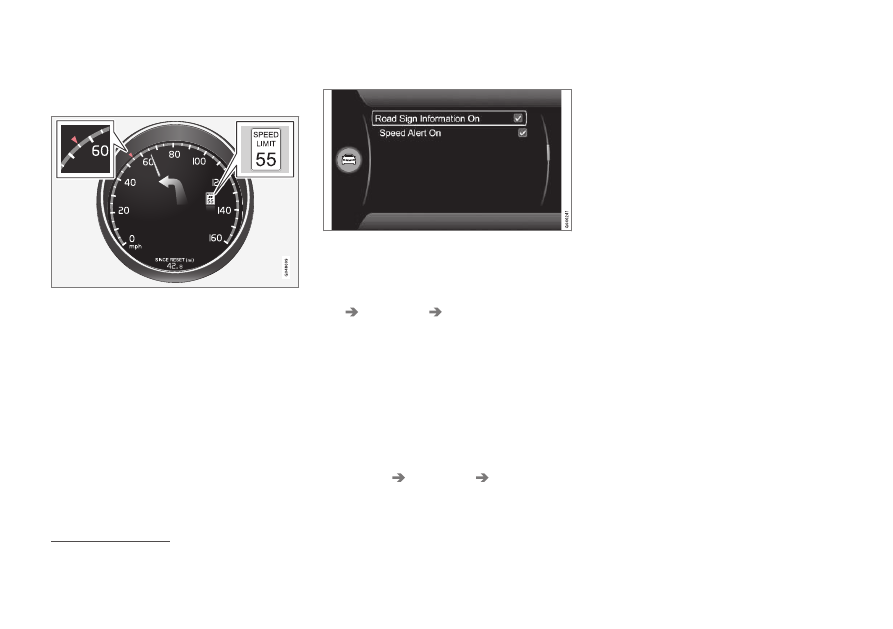Volvo V60 Cross Country (2018 year). Manual - part 11

DRIVER SUPPORT
* Option/accessory.
179
Road Sign Information (RSI) –
operation
Speed limit information
When RSI registers a road sign showing the
speed limit, this sign is displayed as a symbol on
the instrument panel.
A speed limit or a limited access road
ends
1
In situations where RSI detects a sign indicating
the end of a particular speed limit or other indi-
rect speed limit-related information (e.g., Freeway
ends, Expressway ends, etc.) this information will
be displayed in the instrument panel for approx.
10 seconds, after which no road sign information
will be shown until the next speed limit-related
sign has been detected.
Settings in MY CAR
Possible settings in MY CAR
Displaying the speed limit indication can be
deactivated. To do so:
•
Deselect the alternative in MY CAR
Settings
Car settings
Road Sign Information
or cancel by pressing EXIT.
Speed alert
The driver can opt to be alerted if the vehicle
exceeds the posted speed limit by more than
3 mph (5 km/h). The alert is given when the sym-
bol with the posted speed limit in the instrument
panel begins to flash.
To activate speed alert:
•
Check the Speed alert box in MY CAR
Settings
Car settings
Speed alert
or
cancel by pressing EXIT.
Sensus Navigation
If the vehicle is equipped with Sensus Navigation,
speed-related information is gathered from this
system if:
•
The speed limit previously detected by RSI is
no longer considered valid and no new speed
limit sign has been detected.
Related information
•
•
Road Sign Information (RSI) – limitations
(p. 180)
•
1
This function may not be available in all markets.